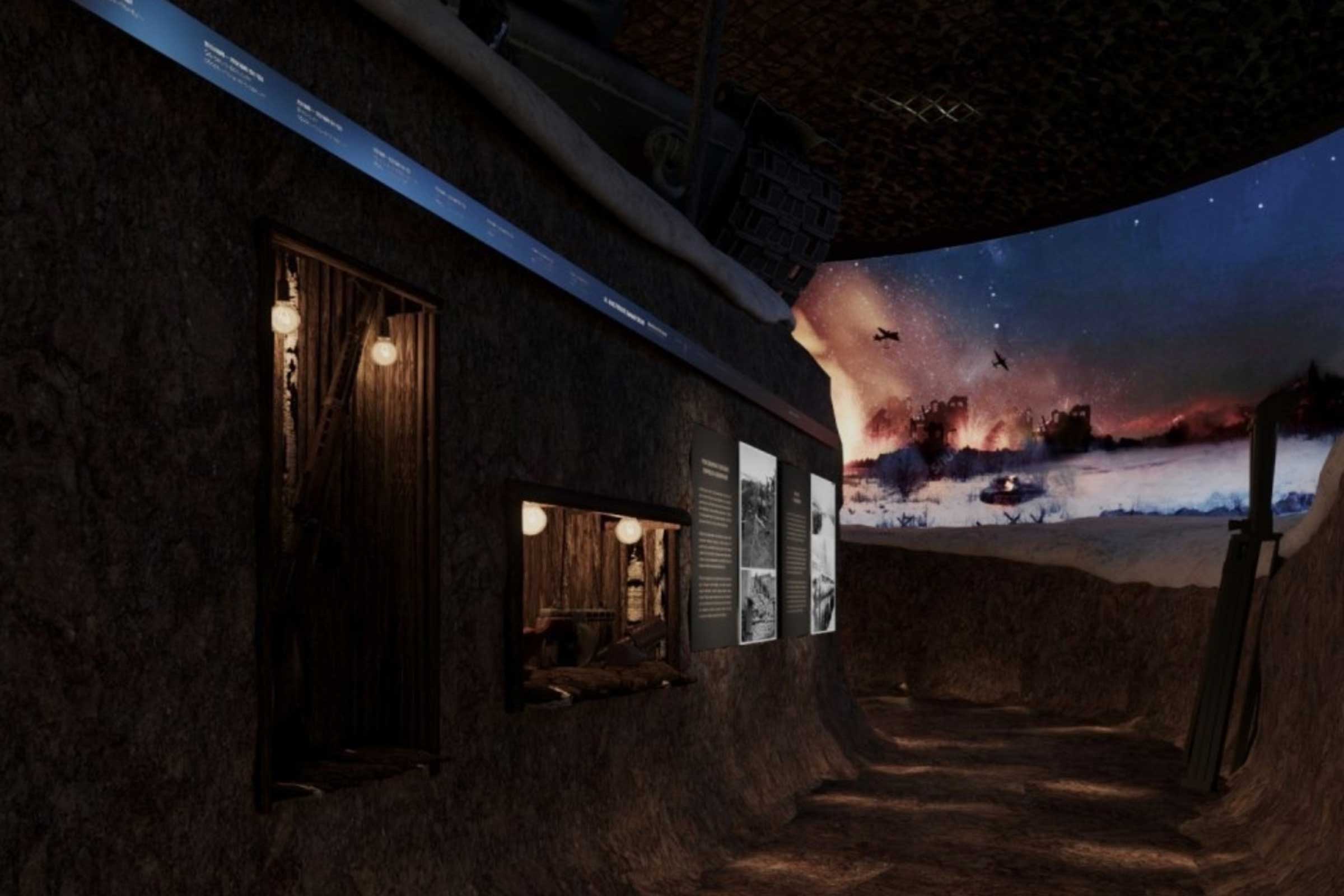As designers around the globe adapt to new creative realities at home, Abigail Honor, CEO and founding partner of Lorem Ipsum, and her team are preparing to take audiences elsewhere. In two new projects—a museum on Zoya Kosmodemyanskaya and an exhibition on the future of cities—the group has successfully designed interactions that transport viewers away from their current realities and into new ones.
We talked with Abigail about the thought processes and design techniques that come along with bringing old and new worlds to life.
[rp4wp]
What are you working on now?
Lorem Ipsum has found itself at the epicenter of the global pandemic [in New York City], so I am hunkered down in my apartment with my partner and two teenage kids, struggling to carve out an esthetic work space with some quiet from which to create. The main project I am currently working on is a museum about Zoya Kosmodemyanskaya, a revered hero of World War II and a symbol of people’s heroism at a harrowing time, who became the first woman awarded the Hero of the Soviet Union. We just wrapped up designing the physical spaces, which include an immersive recreation of an early 1930’s classroom, forest, and to-scale trench from 1941. Each space marries design with media in an unexpected but authentic way to transport the visitor back in time.
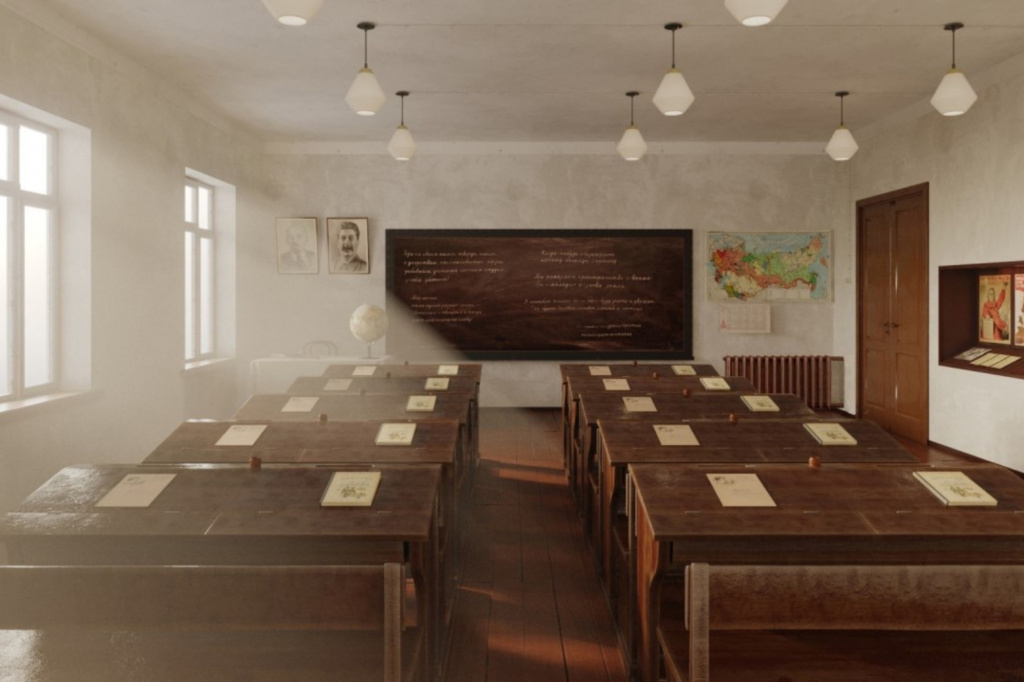
Lorem Ipsum’s recreation of a 1930’s classroom.
What design techniques are you using in each of the three spaces?
In the classroom, the environment quickly transforms from a happy, local school into a war zone with German planes launching a full-scale attack. We utilize sounds and lighting design to quickly and effectively change the mood in the room and produce the drama of the story.
The forest uses physical design and dappled lighting to capture the atmosphere of the landscape, providing the stage for Zoya’s epic tale. Zoya’s mission was to burn down houses with German horses inside. She crawled along the snowy ground and set the barns ablaze before being captured. We introduce a slightly cooler physical and visual temperature to this space, so that the design truly transports the visitors back to this place as they are immersed in her story.
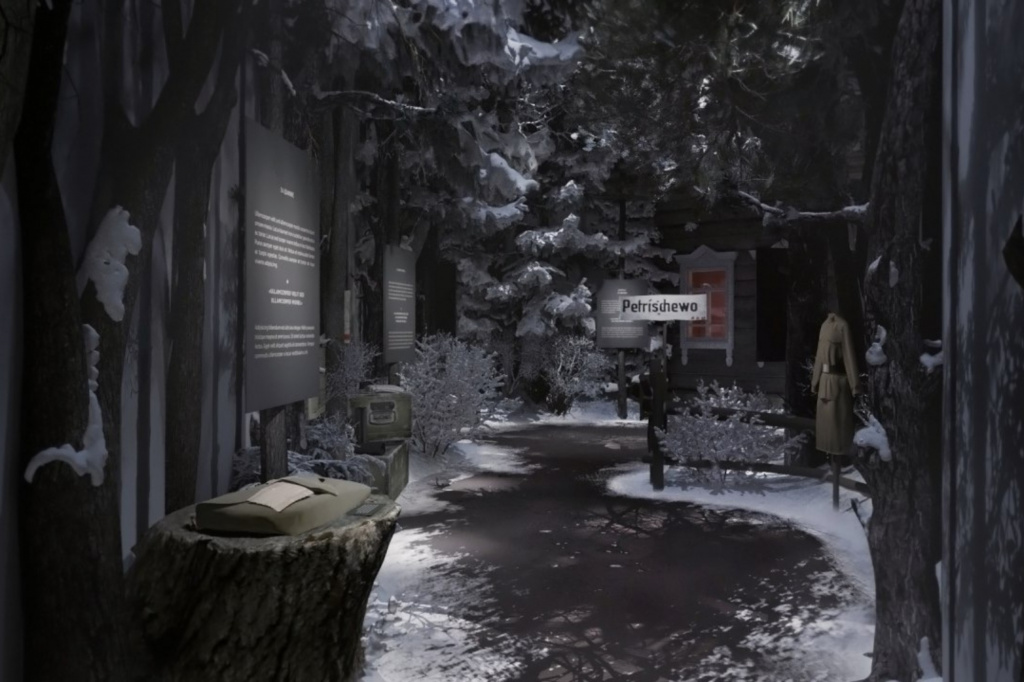
The forest recreation focuses on atmospheric design techniques to bring this chilly Soviet scene to life.
The World War 2 trench design is an evocative mixture of reality and escapism. The trench appears to be deep in the ground as the visitors enter, and above the parapet, just in view, is a huge wraparound 120-degree screen that allows the Battle of Moscow story to unfold as it would have done from the perspective of a soldier. This is a design challenge because we needed to consider the different height of viewers, provide viewing platforms that don’t inhibit flow, and create content that is dramatic and focused for any age.
Overall, this museum is wonderful from a design perspective because the architecture and the interior design work together to create moments of drama and reflection, both integral to telling a successful story.
Do you have any similar projects in the works where you are designing a new world, rather than recreating an old one?
Another project we have just finished designing and are now creating is called Avangrad, which is all about what life will be like in the city of the future. The exhibition centers on more than 50 new inventions from medicine, technology, and science that will significantly change the way we live in the future. This feels incredibly relevant now given this pandemic and the need for science to answer humanities demands quickly and effectively.
We designed Avangrad as amorphous white cocoons that contain the immersive narrative media within them. The visitor is transported into a new world, both figuratively and literally, as they are taken on a journey by one of the featured inventors. Some cocoons you place your head inside, others you walk into, duck into, or simply touch and feel. Every experience is designed with the product narrative front of mind.
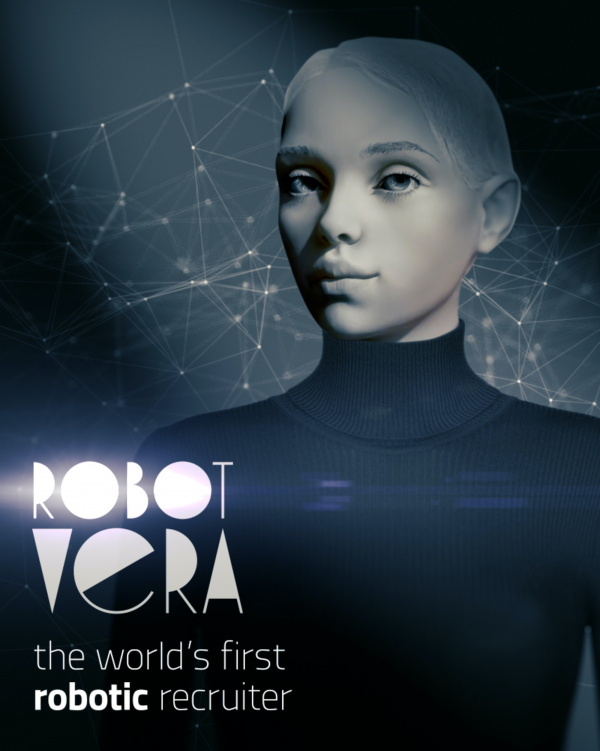
One of Avangrad’s featured inventions is Robot Vera, a recruitment specialist based on artificial intelligence. Vera collects and analyzes résumés, conducts interviews, and determines the best candidates 10 times faster than a person. More than 300 companies already use the technology.
It was also important that we try not to force a recognizable design esthetic onto this exhibition, since it holds within it more than 50 different products with contrasting purposes, design and stories. We needed to make the overall experiential design support each individual narrative. The floor has a mirror reflection to provide a sense of blurring boundaries and the shapes outgrow the roof and walls, uncontained by expectation and a symbol of creativity and the entrepreneurial spirit.
Within the cocoons the stories themselves unfold in the first person, each one different from the last with their own unique hope for the future. From flying taxis to curing dementia, visitors learn about the products in a dramatic and emotionally engaging way. Designed in 3D or 2D, each film uses different elements to tell the dramatic stories about the problems of today that we hope to solve tomorrow. Avangrad is an exhibition about hope, human instinct and our evolution. It was designed to inspire a new generation of scientists, technologists, and entrepreneurs and secure our future. I feel it is even more relevant today than it was yesterday.
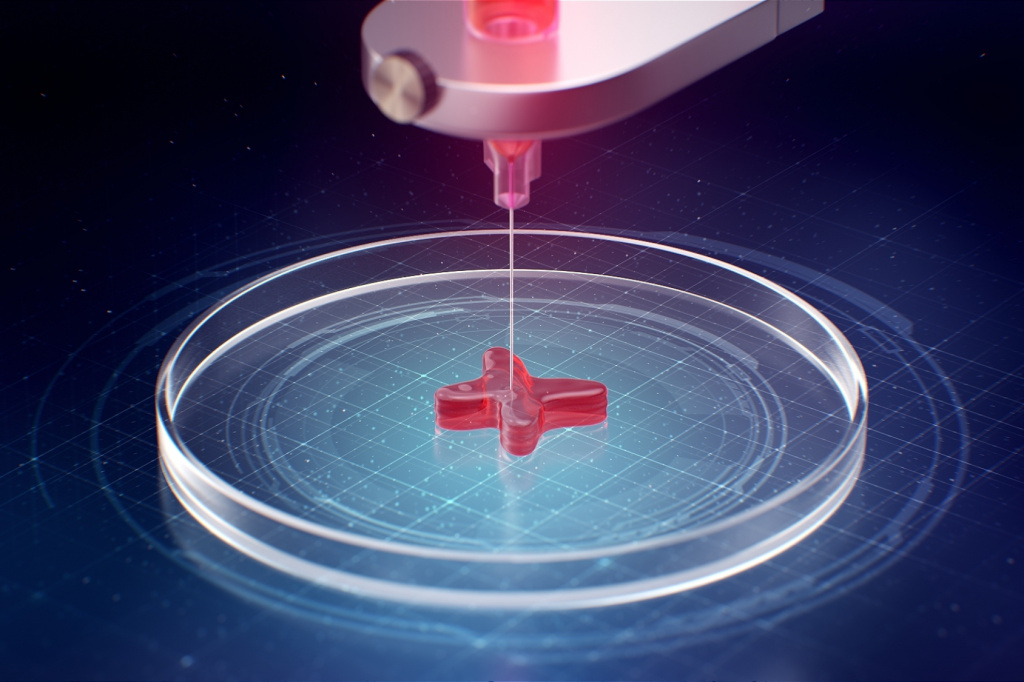
The Organ.Aut bioprinter from 3D Bioprinting Solutions can print biological material in zero gravity conditions. In 2018, it printed an organ construct of a mouse thyroid gland in space.
How do you think great design can improve life?
I think great design improves our lives by serving its purpose well. The best design marries form and function, so, at its best, it not only looks good but works perfectly. Great design elevates and inspires, it brings joy and satisfaction, emotions and feelings I try to create and look for in my daily life.
What effect do you think mandated quarantines and shelter in place policies will have on the design industry?
Change occurs quickly and markedly when limitations are presented and imposed. That has been the case when you look back at our history and the evolution of design, and we will see that same change in design occur post-coronavirus quarantine. Specifically, I look forward to seeing solutions keeping us physically more connected when not being together, creating personal space between us when we are forced together, and redefining homes to accommodate more multi-use spaces than ever before. I am very optimistic that the design industry will not only bounce back but thrive, and, at the very least, we will see more fantastic objects appear to help us in any future quarantine.
Photos Courtesy of Lorem Ipsum
